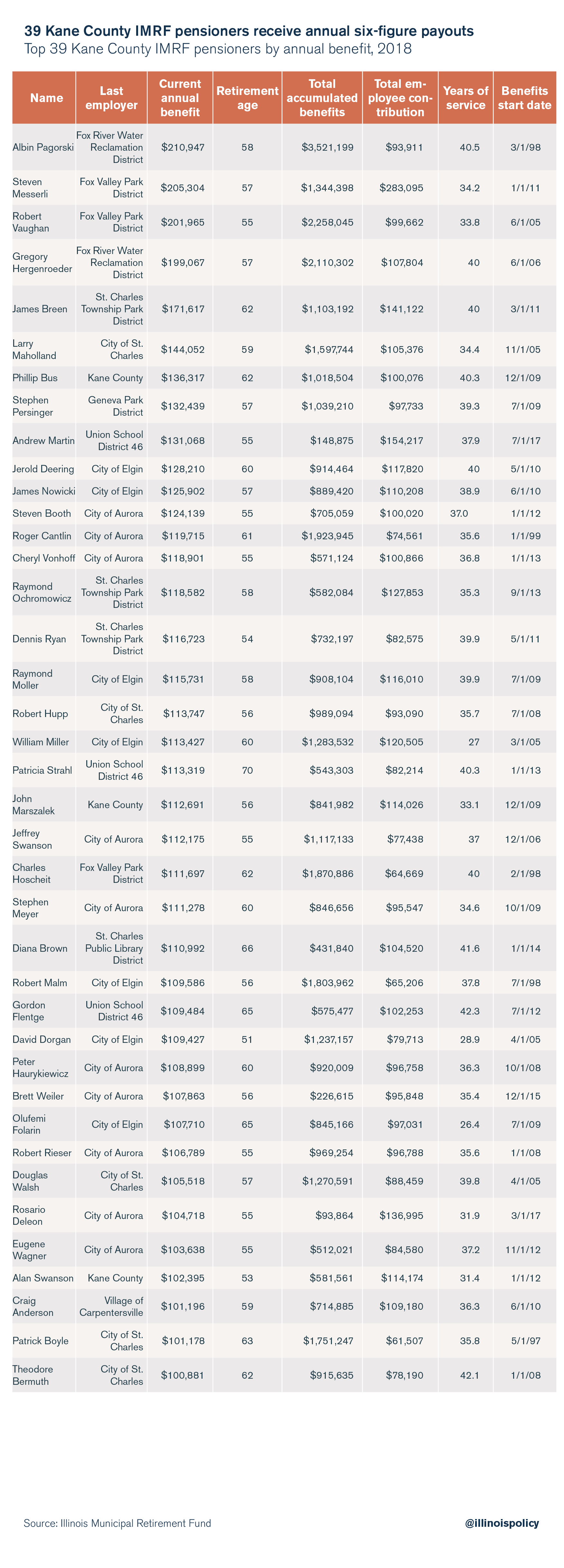Retired Kane County water district employee has banked $3.5M in pension payments
Despite serving one of the most overtaxed parts of the state, a retired Kane County-area water district employee has collected millions in pension payouts over the past 20 years.
While Kane County homeowners suffer one of the heaviest tax burdens in the state, at least one retired municipal employee has benefited greatly from taxpayer funds.
Albin Pagorski has received more than $3.5 million in pension payments since retiring in 1998 at age 58 from the Fox River Water Reclamation District, or FRWRD, which serves 180,000 residents in Elgin, South Elgin and West Dundee, as well as portions of Sleepy Hollow, Streamwood, Hoffman Estates and unincorporated St. Charles Township.
Pagorski’s current annual pension benefit is nearly $211,000, despite having only contributed $93,900 to his retirement during his 40 years of work, according to documents from the Illinois Municipal Retirement Fund, or IMRF.
His is not the only expensive government worker retirement straining Kane County taxpayers. As many as 38 other local government pensioners in Kane County enrolled in IMRF are receiving six-figure annual payouts. One of those pensioners, Gregory Hergenroeder, was also a 40-year FRWRD worker and has already accumulated $2.1 million in just 12 years of retirement.
These benefit levels, while unaffordable, are not the fault of government employees themselves. State lawmakers set the rules. However, the benefits these employees receive contrast starkly with the reality local taxpayers face.
Typical homeowners in Kane County pay higher property taxes than the state average and more than double the national average, when measured as a share of home value. The average single-family home in Kane County had a property tax bill of $6,517 in 2017, according to ATTOM Data solutions, a property data company. The average home value for the county was estimated at nearly $235,800, bringing the average effective property tax rate up to 2.76 percent. The national average, meanwhile, was 1.17 percent.
Taxpayers contribute far more to IMRF retirements than employees themselves, and benefits are growing at a rate far too fast for taxpayers to keep up with. IMRF accrued pension benefits have been growing at the pace of 7.2 percent per year since 2000.
Worse yet for taxpayers, IMRF is not the only unsustainable pension fund they’re on the hook for. Many local police and fire pension liabilities throughout Kane and across the state have been growing far faster than taxpayers can manage. For example, in the Cook County village of Streamwood – one of the towns FRWRD serves – taxpayer contributions to its fire and police pension funds increased 135 percent and 197 percent, respectively, from 2006 to 2016. Despite these massive increases in taxpayer contributions, the Streamwood fire pension fund has an even lower funding ratio today than it had in 2006.
Taxpayers know this, and many are getting out before more pain comes. Cook and the collar counties each lost more residents to other counties across the nation than they gained from other counties.
If lawmakers want to retain and attract residents, and see them thrive, they must rein in property taxes by controlling the growth of pension liabilities. In the short term, lawmakers should implement 401(k)-style retirement plans for new workers. This would be a fair and promising proposal for taxpayers and government workers alike. In the long term, lawmakers must amend the Illinois Constitution in order to adjust future, unearned retirement benefits for government workers.